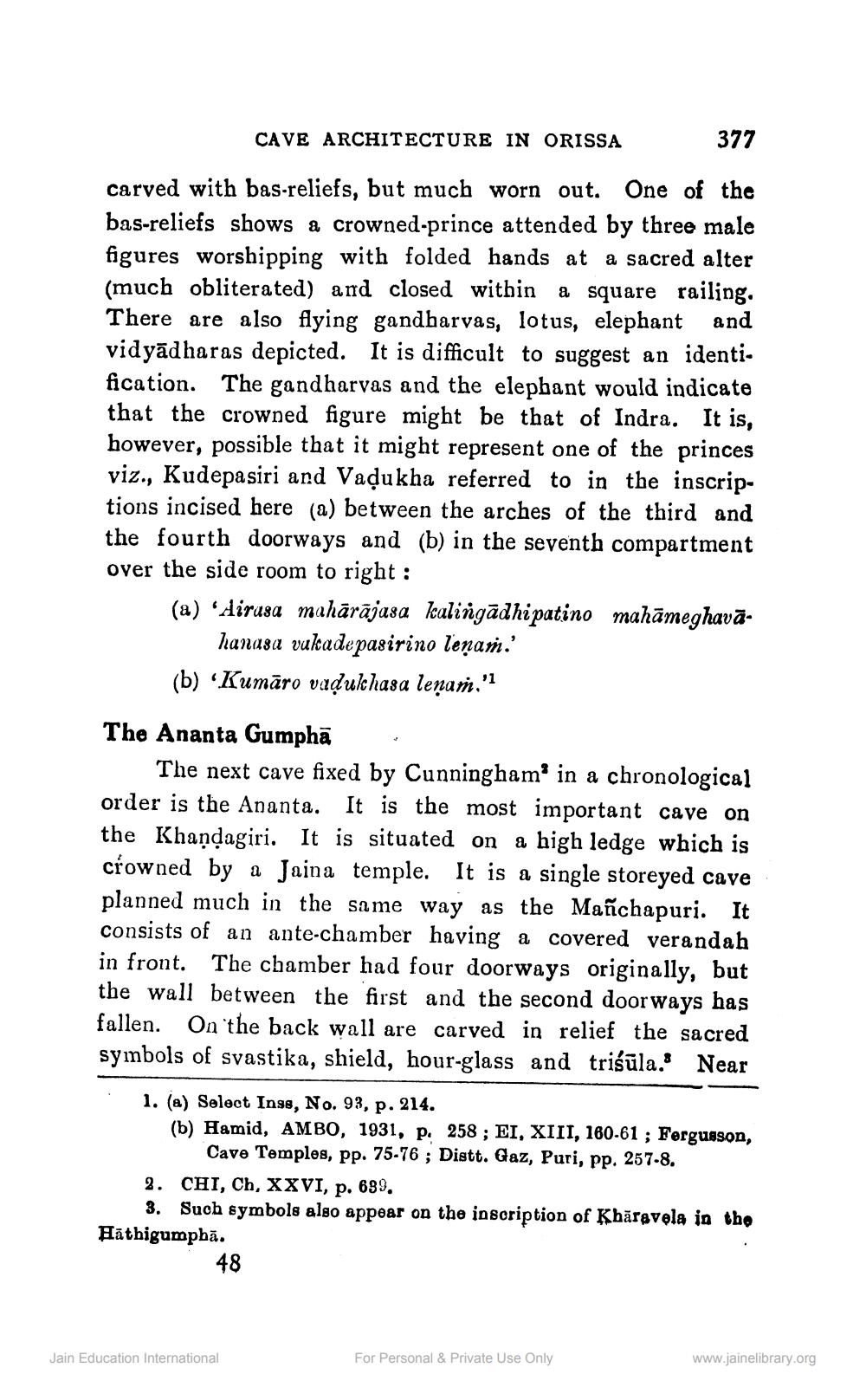________________
CAVE ARCHITECTURE IN ORISSA 377 carved with bas-reliefs, but much worn out. One of the bas-reliefs shows a crowned-prince attended by three male figures worshipping with folded hands at a sacred alter (much obliterated) and closed within a square railing. There are also flying gandharvas, lotus, elephant and vidyād haras depicted. It is difficult to suggest an identification. The gandharvas and the elephant would indicate that the crowned figure might be that of Indra. It is, however, possible that it might represent one of the princes viz., Kudepasiri and Vadukha referred to in the inscriptions incised here (a) between the arches of the third and the fourth doorways and (b) in the seventh compartment over the side room to right: (a) 'Airasa mahārājasa kalingādhi patino mahāmeghavā.
hanasa vukadepasirino lenam.' (b) Kumāro vaờukhasa lenam.'1
The Ananta Gumphā .
The next cave fixed by Cunningham in a chronological order is the Ananta. It is the most important cave on the Khaņdagiri. It is situated on a high ledge which is crowned by a Jaina temple. It is a single storeyed cave planned much in the same way as the Mañchapuri. It consists of an ante-chamber having a covered verandah in front. The chamber had four doorways originally, but the wall between the first and the second doorways has fallen. On the back wall are carved in relief the sacred symbols of svastika, shield, hour-glass and triśūla. Near
1. (a) Select Inse, No. 93, p. 214.
BO. 1931. p. 258 : EI, XIII, 160-61 ; Fergusson, Cave Temples, pp. 75-76 ; Distt. Gaz, Puri, pp. 257-8. 2. CHI, Ch, XXVI, p. 639.
3. Such symbols also appear on the inscription of Khăravela in the Hlāthigumpbā.
48
For Personal & Private Use Only
Jain Education International
www.jainelibrary.org




